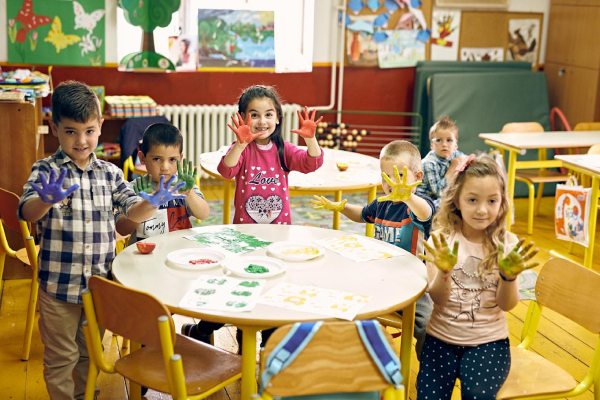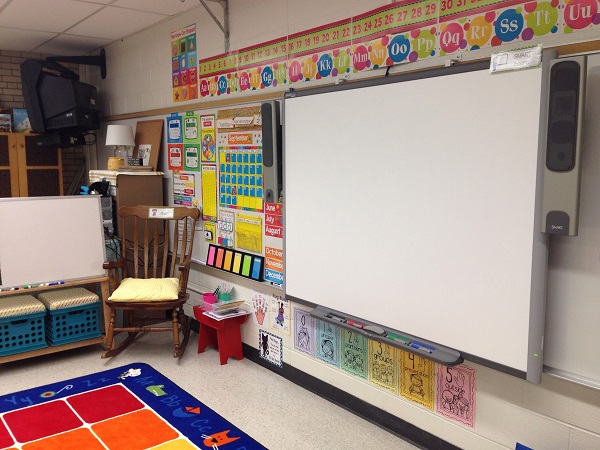
Hi-tech Gadgets: Making Your Classrooms Smarter
Technology is a driving force in education. It opens up doors and opportunities that prepare students to prepare for the future rather than pulling them back to the past. Technology is paving the way for real-world integration and individualised learning.
Today’s schools are openly embracing the incorporation of digital advances into the classroom. Networked classrooms are becoming the digital backbone of future instructional methods, and many experts are divided on the appropriate use of these environments. In the classroom, multiple sources of information are already available. Systems such as the ELMO CRC-1 switcher are becoming popular focal points. Your local VoIP service providers can also help you use Smartboards with an internet connection. Swing by here to know more about VoIP solutions.
From kindergarten to college, technology is being incorporated at a rapid pace. Even preschoolers are acing it with technology. Given that they can be one of the most challenging age groups in education, education experts are turning to technology to keep these children’s attention span in check. The use of the Smartboard has proven to be one of the best ways to keep kindergarten children attentive in class. Let’s check out the details.
Smart Ways To Use Smartboards In The Classroom
Smartboards are an innovative way to teach in the classroom. They are interactive and allow educators to instruct their students in various ways by utilising different teaching styles. Teachers aren’t restricted in sharing with their students, which is a good thing.
Interactive Smart Boards allow students to interact with images displayed on a computer screen using a tool or finger. Teachers can access information from all over the world using a computer connected to the internet or a local area network, and students can collaborate.
Students benefit from interactive lessons delivered on a smartboard or whiteboard because they ask more questions and take more notes. Using a whiteboard in the classroom can help students learn more effectively by providing additional materials and opportunities to engage with the material. Smart technology can highlight important information for students as they progress through a lesson.
There are various ways you can optimise the use of Smartboards in the classroom. With a Smartboard, you can:
- Take daily attendance, teach alphabets and concepts and make students more engaged and interactive.
- Read aloud stories to preschoolers. Teachers can use pointers to assist students in following the story.
- Play kid-friendly exercise DVDs and Just Dance for Kids videos to make music and movement interesting.
- Increase the effectiveness of classroom management, such as taking attendance and keeping track of lunch counts.
- Administer multiple-choice tests, and students can use remote clickers to respond to questions on the screen.
- Incorporate movement and hands-on action into preschool lessons.
- Instructors can use these sheets to reduce the need for paper by having students copy the exercises from the board.

Benefits Of Using Smartboards
SMART Boards are taking over K-12 classrooms and are changing the way students learn. It helps young students become more comfortable with the touch process, which is becoming increasingly important when using Wi-Fi digital tools, such as computer notepads and e-readers.
Students could use the SMART Board to develop their digital and presentation skills by presenting PowerPoint presentations, software lessons, or interactive websites.
SMART Boards can help students:
- Understand and remember fractions more easily
- supplement textbook learning with virtual learning
- Take multiple-choice tests
- Participate in interactive test review sessions
- Save exercises on the computer instead of papers and notebooks.
SMART Boards are also helping professors run their lecture halls. They allow lecturers to write on dry-erase whiteboards or chalkboards without turning their backs to the class. A primary grade teacher may post large, brightly coloured icons with individual student names on the board before each class every day before class.
Smartboards can keep the attention of preschoolers who have short attention spans. You can use a SmartBoard to project read-aloud stories, and we can use digital storybooks to teach letter names, sounds, and the fundamentals of printing. Try projecting music and exercise videos onto the Smartboard, or play YouTube dance videos or rhymes. Present a problem to the class, and then hand over the interactive whiteboard to the students to solve it independently.
The Final Say.
If you want to use Smartboards in your school, the classroom must be redesigned to adequately incorporate technological advances to prepare students for the future. Smartboards are used in classrooms as a teaching tool and allow users to write on them with real or digital markers. Teachers who have experimented with “flipped classrooms” will find these devices particularly useful, and so will the students.





